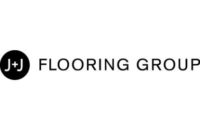Top 10 Risk Factors for Slip-and-Fall Accidents
Top 10 Risk Factors for Slips and being aware of risk factors that can cause a slip-and-fall accident is a major concern in all types of facilities.
According to forensic reviews of dozens of slip-and-fall injury accidents, these are the 10 most commonly associated risk factors for slips and falls:
1. Surface composition: Refers to the type of floor surface and its slip resistance when dry and properly cleaned*
2. Foreign substances: Such as ice, grease, or water
3. Surface conditions: Raised or recessed edges, loose carpeting, soiling and overall cleanliness of the floor
4. Surface changes: For instance, walking from a carpeted floor to a tile floor
5. Level changes: Surface level changes; unexpected slopes or raises of three steps or less
6. Obstructions: For example, extension cords, hoses, and other foreign items
7. Visibility: Poor lighting, but also glare, shadows, bright lights, or color contrasts, which can impede visibility
8. Human factors: Different individual physical capabilities and physical challenges, shoe types, and familiarity with a walk area
9. Stairs: Falls from stairs, which are defined as more than three steps. These typically result in the most serious injuries
10. Unusual features: Out-of-the-ordinary conditions that might distract a walker, such as loud noises, strobe or flashing lights, etc
“Of particular concern is ‘surface conditions’ of the floor,” says Matt Morrison, communications manager for Kaivac, developers of the OmniFlex™ Crossover Cleaning system.
“Conventional floor mopping methods can spread soils over floors and create a slippery situation, changing the floor’s surface condition. Selecting alternative floor cleaning systems can enhance cleaning results and lower risks.”
Looking for a reprint of this article?
From high-res PDFs to custom plaques, order your copy today!






